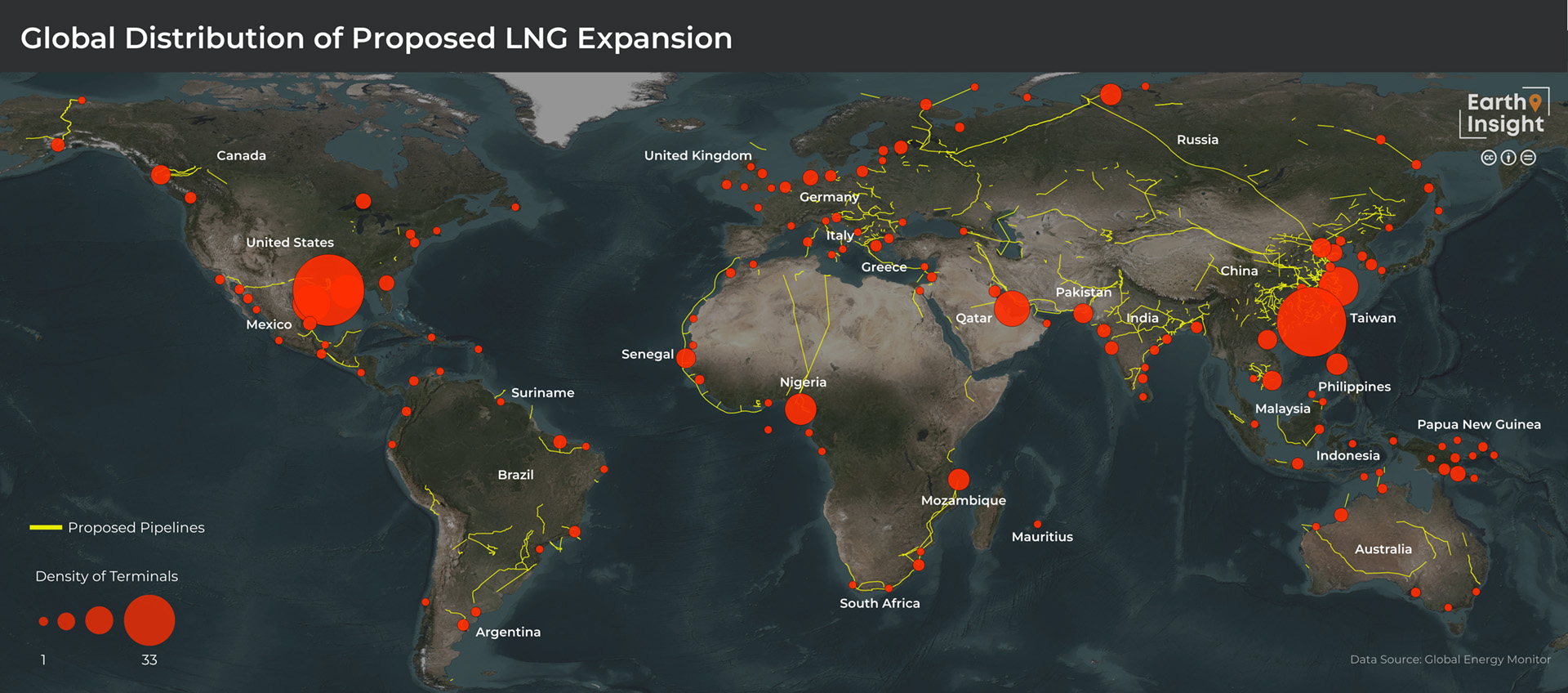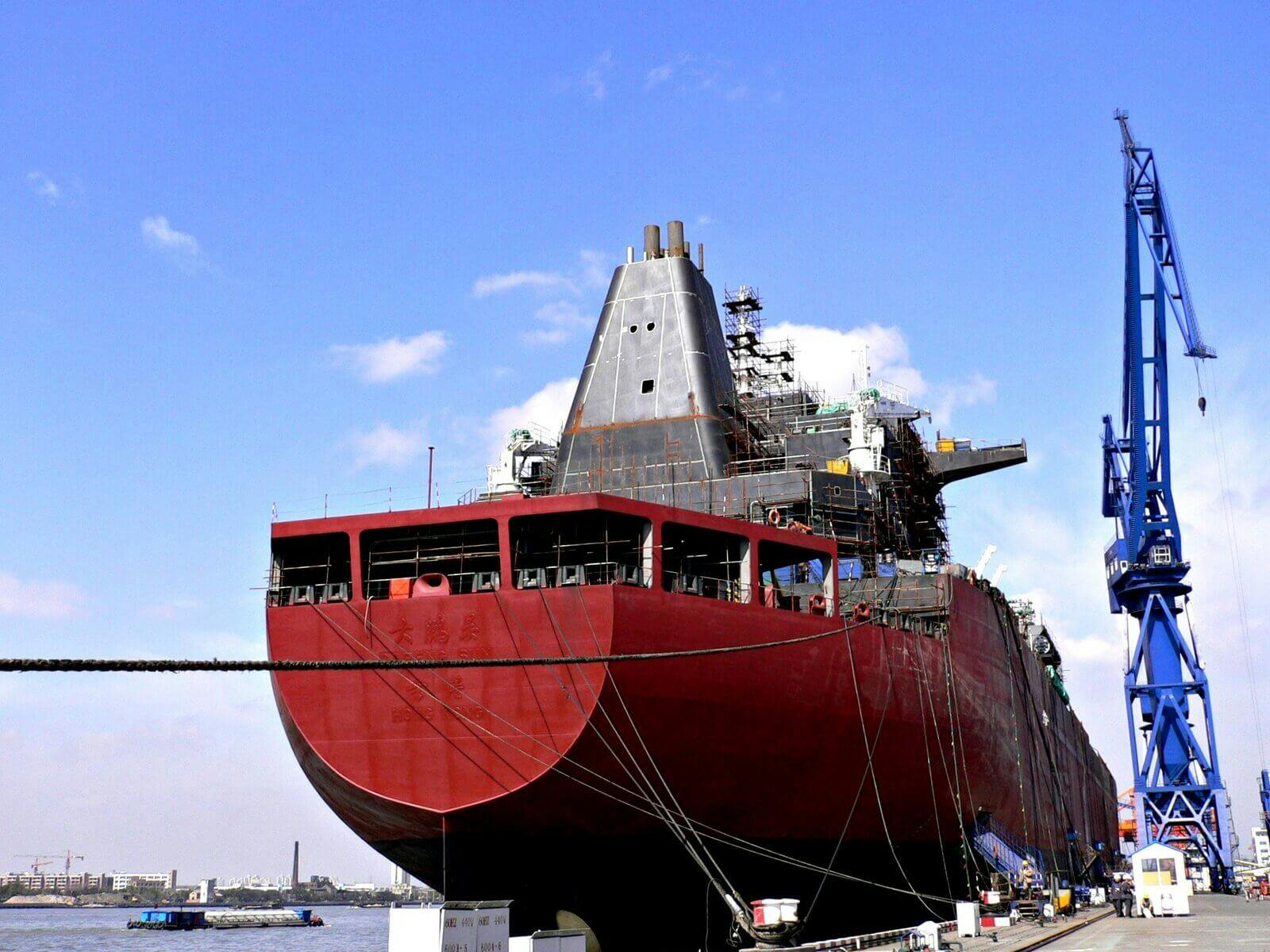Anything But Natural: Liquefied Natural Gas (LNG) Expansion Threats to Coastal and Marine Ecosystems
Download Report (English) Download Report (Português)In the last few years, infrastructure for and the use of liquefied natural gas (LNG) — a cooled form of fossil gas that is predominantly composed of methane (CH4) — has seen a rapid expansion across the globe. Many of the planned blocks and facilities globally are located in highly-sensitive and diverse marine areas. These waters and coastlines are populated by iconic animals, such as turtles, dolphins, whales, and whale sharks, but also by many fish and seafood species that provide food and income for local communities, and populations far beyond their borders.
- In the United States, developments along the Gulf Coast will disproportionately impact communities of color in some of the poorer states of the country. These communities already experience poor air quality from operating LNG facilities and regularly suffer downpours and floods caused by climate change-fueled hurricanes and storms;
- In Mexico’s Baja California state, new LNG infrastructure threatens “the world’s aquarium,” home to 40% of all marine mammals in the world and many endangered species. If current plans go ahead, eight new terminals will be built in a region that is a whale sanctuary and is listed as a UNESCO World heritage site;
- In the Philippines, building new LNG terminals will add more pressure to the Verde Island Passage, one of the world’s most biodiverse marine places The region, often called “the Amazon of the Oceans,” is already one of the world’s busiest marine routes and was hit by an oil spill in 2023 with devastating consequences;
- In Mozambique and East Africa, gas developments have already caused the forced displacement of local communities and new plans threaten several critically endangered marine species. The offshore expansion will take place along a coastline full of mangroves and coral reefs;
- and, in Brazil, there are plans to build new LNG terminals along the Atlantic coast, a region that is already cluttered with oil and gas infrastructure. Whale populations will be particularly affected, as the new developments overlap with their breeding grounds and migration routes.
When LNG is burned to produce energy, it releases less carbon dioxide in comparison to other fossil fuels. For this reason, many see it as a “transition fuel” in the fight against climate change, one that could be used as an alternative to coal and oil while renewable energies are not fully deployed. However, as natural gas is primarily methane, a greenhouse gas far more potent than carbon dioxide, leaks and other forms of pollution from natural gas infrastructure are by no means inconsequential for the climate — methane contributes to about a third of all global warming — and upstream emissions from gas production are frequently underestimated.

The last 10 years have been the ocean’s warmest since at least the 1800s, with 2023 being the hottest ever recorded. Destructive marine heatwaves are becoming more frequent and intense across the world. Massive coral bleaching episodes are destroying reefs and all the natural life they support. And species are being displaced from their habitats, moving to cooler and deeper waters, disrupting ecological chains and impacting fisheries. In May 2024, the International Tribunal for the Law of the Sea dictating that emissions from fossil fuels — and other planet-warming gasses that are absorbed by the oceans — count as marine pollution; a first climate-related ruling from that body.
Our new report — published with co-authoring organizations Say No to LNG, CEED Philippines, Friends of the Earth Mozambique/Justiça Ambiental! the Port Arthur Community Action Network (PACAN), Defensa Ambiental del Noroeste (DAN) Mexico, and ARAYARA Brazil — paints a sobering picture of current plans to expand Liquefied Natural Gas (LNG) infrastructure worldwide, posing threats to the global climate as well as significant hubs for biodiversity.
%20shipping%20container.jpg)



